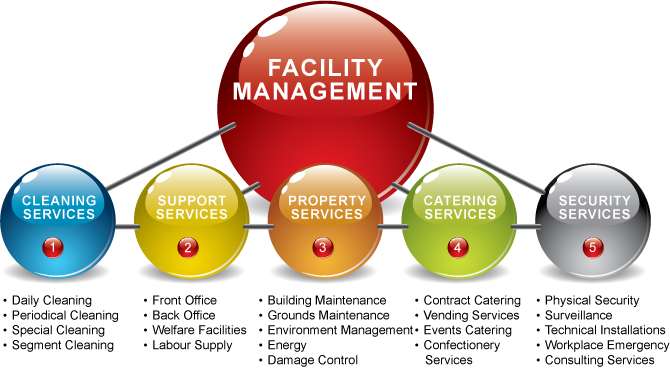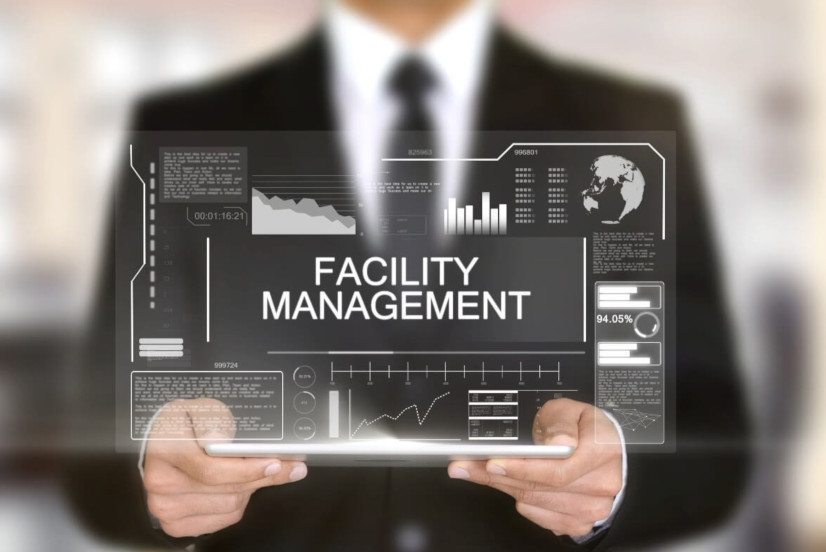Best Practices in Facility Management for Modern Organizations
Best Practices in Facility Management for Modern Organizations
Blog Article
The Necessary Overview to Facility Management: Approaches for Success
Center monitoring plays a crucial function in the general success of a company, offering as the foundation that sustains safety, productivity, and effectiveness. The subtleties of effective center management prolong past plain logistics and call for a detailed understanding of both qualitative and measurable metrics.
Comprehending Facility Management
What constitutes effective center management? Effective center monitoring includes the sychronisation of various organizational features to make sure that developed atmospheres are safe, efficient, and helpful to performance. It incorporates the principles of design, company, and engineering monitoring to produce a seamless functional flow within a company.
Secret aspects of facility administration consist of room preparation, maintenance management, and compliance with health and wellness and security laws. Room preparation concentrates on optimizing the use of physical resources to support organizational goals, while maintenance administration makes sure that centers are maintained in ideal problem, making best use of life-span and lowering functional prices. Conformity with lawful and governing requirements is vital, as it safeguards the company against prospective obligations and enhances its online reputation.
Moreover, efficient facility administration counts on the strategic use of technology, such as Building Management Equipment (BMS) and Computer-Aided Center Management (CAFM) devices. These modern technologies assist in real-time tracking of building systems and enhance maintenance processes (Facility Management). Inevitably, a thorough strategy to center management not only promotes operational efficiency however likewise cultivates a favorable atmosphere for employees and site visitors alike, driving overall organizational success

Trick Approaches for Optimization
Enhancing facility monitoring needs a strategic technique that aligns functional exercise with organizational purposes. To accomplish this, the initial essential approach is the implementation of incorporated technological options. Making use of sophisticated software program systems permits real-time tracking of center operations, assisting in data-driven decision-making and improving general performance.
Secondly, routine analyses of facility performance are crucial. Conducting routine examinations and audits enables facility supervisors to recognize areas that need enhancement, making certain that resources are assigned successfully. This aggressive method assists in decreasing downtime and boosting service delivery.
An additional crucial technique is promoting collaboration throughout departments. By urging open interaction in between teams, facility managers can better align their techniques with organization goals, causing improved operational harmony. Additionally, engaging personnel in training programs advertises a society of responsibility and improves their capacity to add to optimization initiatives.
Enhancing Safety And Security Methods
Reinforcing safety and security methods is vital for developing a secure atmosphere within centers. A thorough safety and security procedure not just secures visitors and employees but also boosts functional performance. Facility Management. To accomplish this, facility managers must conduct regular risk evaluations to determine possible dangers and guarantee that ideal measures are in place

In addition, clear communication channels need to be established to report safety and security concerns immediately. This includes producing an accessible platform for staff members to voice possible hazards or incidents without concern of . Moreover, leveraging technology can improve safety and security steps; for instance, implementing monitoring systems and accessibility controls helps keep an eye on center tasks and restrict unauthorized access.
Lastly, conformity with neighborhood regulations and sector standards is non-negotiable. Routine audits and testimonials of safety and security protocols guarantee positioning with present regulations and ideal practices. By prioritizing these strategies, facility managers can grow a culture of safety that secures all stakeholders and ultimately adds to the organization's success.
Improving Work Environment Atmosphere
A positive workplace atmosphere substantially improves worker spirits and efficiency, making it an important emphasis for center administration. To produce such an atmosphere, center managers ought to prioritize several essential elements, including ergonomics, aesthetics, and employee engagement.
Ergonomic factors to consider check it out are important to decrease physical pressure and pain. This includes offering adjustable furnishings, correct illumination, and sufficient space for activity. These changes can cause minimized absenteeism and increased work contentment.
Looks play a crucial role fit the office environment. Utilizing shade psychology, all-natural lighting, and plant can promote a welcoming and boosting setting. Attentively created areas can enhance imagination and improve total wellness.
Moreover, urging worker engagement with inclusive decision-making processes can enhance the feeling of ownership and belonging. Gathering responses on work environment improvements and involving workers in the design procedure can lead to an extra tailored setting that meets their demands.
Lastly, get more advertising well-being efforts, such as wellness programs and relaxation rooms, can even more add to a supportive work environment culture. By concentrating on these approaches, facility supervisors can effectively enhance the office environment, driving both worker contentment and organizational success.
Determining Success in Facilities
Gauging success in facility administration calls for an extensive technique that evaluates both quantitative and qualitative metrics. Measurable metrics typically consist of essential efficiency indications (KPIs) such as space utilization rates, power intake, maintenance costs, and occupancy degrees. These metrics give a clear image of operational effectiveness and monetary efficiency, permitting facility managers to determine areas for enhancement and standard versus industry standards.
Qualitative metrics, on the other hand, concentrate on individual fulfillment and staff member involvement. Surveys and feedback mechanisms can evaluate exactly how well the facilities satisfy the requirements of passengers, aiding to analyze the total office setting. This facet is crucial, as a satisfied workforce is frequently linked to enhanced productivity and retention rates.
To effectively measure success, facility supervisors need to additionally take into consideration incorporating innovation, such as developing monitoring systems and information analytics tools, to collect and evaluate pertinent data. Regularly assessing both collections of metrics permits for a much more balanced view of efficiency and informs strategic choices. Eventually, a successful facility monitoring method depends upon a commitment to continuous enhancement, making certain that both functional efficiencies and individual fulfillment are focused on.

Conclusion
In conclusion, effective facility administration is vital for boosting organizational performance. Prioritizing safety procedures and enhancing Website work environment settings better add to increased employee complete satisfaction.
Facility administration plays an important duty in the total success of a company, offering as the foundation that sustains performance, safety and security, and performance.Secret elements of facility monitoring consist of area planning, maintenance monitoring, and conformity with health and safety laws.In addition, reliable facility management relies on the critical usage of innovation, such as Building Management Equipment (BMS) and Computer-Aided Center Management (CAFM) tools. Inevitably, a detailed method to facility monitoring not only promotes functional effectiveness but additionally promotes a positive setting for workers and visitors alike, driving overall business success.
Eventually, a successful center management approach hinges on a commitment to constant improvement, making certain that both operational efficiencies and individual complete satisfaction are focused on.
Report this page